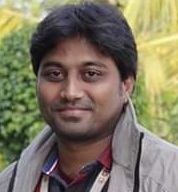Forensic Anthropology
Course Attendees
Still no participant
Course Reviews
Still no reviews
Course Name : Forensic Anthropology
Code(Credit) : CUTM1671(4-2-0)
Course Objectives
To have in depth knowledge about :
- Importance of forensic anthropology in identification of persons.
- Different techniques of facial reconstruction and their forensic importance.
- Significance of somatoscopy and somatometry.
Learning Outcomes
After studying this paper, student will be able to:
- Apply the knowledge of anthropology in investigations pertaining to identification of persons.
- have knowledge of facial reconstruction and it's application.
- Identify remains through somatoscopy and somatometry.
Course Syllabus
Unit 1: Significance of Forensic Anthropology
Scope of forensic anthropology. Study of human skeleton. Nature, formation, and identification of human bones. Determination of age, sex, stature from skeletal material.
Unit 2: Personal Identification – Somatoscopy and Somatometry
Somatoscopy – observation of hair on head, forehead, eyes, root of nose, nasal bridge, nasal tip, chin, Darwin’s tubercle, ear lobes, supra-orbital ridges, physiognomic ear breadth, circumference of head. Scar marks and occupational marks.
Somatometry – measurements of head, face, nose, cheek, ear, hand and foot, body weight, height.
Indices - cephalic index, nasal index, cranial index, upper facial index.
Unit 3: Facial Reconstruction
Portrait Parle/ Bertillon system. Photofit/identi kit. Facial superimposition techniques.
Cranio facial super imposition techniques – photographic super imposition, videosuperimposition, Roentgenographic superimposition. Use of somatoscopic and
craniometric methods in reconstruction. Importance of tissue depth in facial reconstruction.
Genetic and congenital anomalies – causes, types, identification and their forensic significance.
List of Practicals : Credits: 2
- To determine of age from skull and teeth.
- To determine of sex from skull.
- To determine sex from pelvis.
- To study identification and description of bones and their measurements.
- To investigate the differences between animal and human bones.
Suggested Readings
- M.Y. Iscan and S.R. Loth, The scope of forensic anthropology in, Introduction to Forensic Sciences, 2nd Ed., W.G. Eckert (Ed.), CRC Press, Boca Raton (1997).
- D. Ubelaker and H. Scammell, Bones, M. Evans & Co., New York (2000).
3. S.Rhine, Bone Voyage: A Journey in Forensic Anthropology, University of Mexico Press, Mexico (1998).
Session Plan
Session 1
Unit 1: Significance of Forensic Anthropology
Scope of forensic anthropology.
Session 2
Study of human skeleton.
Session 3
Nature, formation, and identification of human bones.
Session 4
Nature, formation, and identification of human bones.
Session 5
Determination of age from skeletal material.
Session 6
Determination of age from skeletal material.
Session 7
Determination of sex from skeletal material.
Session 8
Determination of stature from skeletal material.
Session 9
Unit 2: Personal Identification – Somatoscopy and Somatometry
Somatoscopy – observation of hair on head, forehead
Session 10
Somatoscopy – observation offorehead, eyes, root of nose, nasal bridge, nasal tip, chin,
Session 11
Observation of Darwin’s tubercle, ear lobes, supra-orbital ridges,
Session 12
Observation of physiognomic ear breadth, circumference of head.
Session 13
Observation of Scar marks and occupational marks.
Session 14
Somatometry – measurements of head, face, nose, cheek, ear, hand and foot, body weight, height.
Session 15
Somatometry – measurements of head, face, nose, cheek, ear, hand and foot, body weight, height.
Session 16
Indices - cephalic index, nasal index, cranial index, upper facial index.
Session 17
Unit 3: Facial Reconstruction
Portrait Parle/ Bertillon system.
Session 18
Photofit/identi kit.
Session 19
Facial superimposition techniques.
Session 20
Cranio facial super imposition techniques – photographic super imposition,
Session 21
Cranio facial super imposition techniques – videosuperimposition,
Session 22
Cranio facial super imposition techniques – Roentgenographic superimposition.
Session 23
Use of somatoscopic and craniometric methods in reconstruction.
Session 24
Use of somatoscopic and craniometric methods in reconstruction.
Session 25
Importance of tissue depth in facial reconstruction.
Session 26
Genetic and congenital anomalies – causes, types, identification and their forensic significance.
Session 27
Genetic and congenital anomalies – causes, types, identification and their forensic significance.
Case Studies
Case Studies
Our Main Teachers

A.Avinash working as Assistant Professor, Dept of CSE, Centurion University of Technology and Management, Andhra Pradesh . Interested to work on Machine learning,Natural Language Processing,Problem Solving Methodologies , and ChatBot. Programming Skill: C Programming Data Structure Object Oriented Programming using C++ Formal Language Automata Theory Python Web Development(HTML,CSS,PHP) Database Management Systems Compilers


Recent Comments